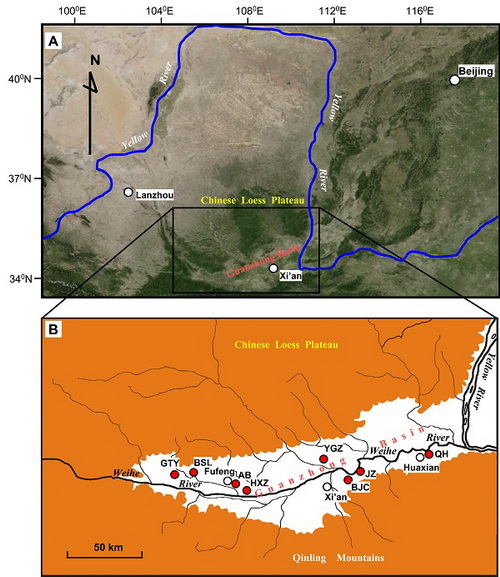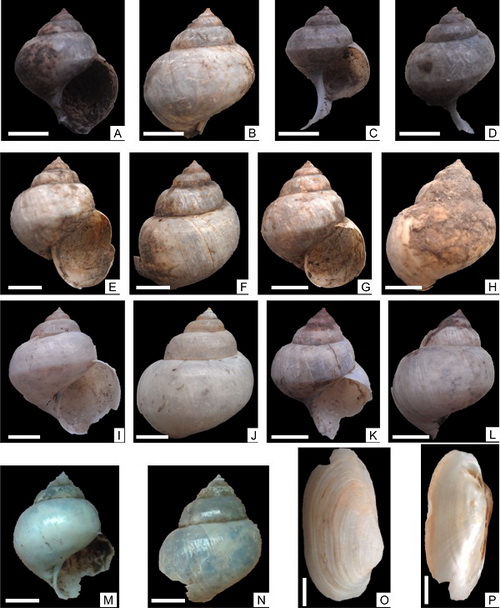Mid-Neolithic exploitation of mollusks in the Guanzhong Basin of Northwestern China: Preliminary resultsUpdate time:05 29, 2013
Vice Professor LI Fengjiang and his team investigate mollusks preserved in middle Neolithic archaeological sites in the Guanzhong Basin (southern Chinese Loess Plateau (CLP)) with an objective to examine the exploitation of gastropod and bivalve mollusks, mainly as prehistoric food and furthermore as tools and ornaments, during the middle Neolithic. These lines of evidence indicate that the mollusks are the remains of prehistoric meals. The mollusk shells were likely discarded into the pits by prehistoric humans after the flesh was eaten. However, these mollusk remains may not have been staple food since they are not found in large quantities. Mollusk shell tools and ornaments are also observed. Shell tools include shell knives, shell reaphooks and arrowheads, whereas shell ornaments are composed of pendants and loops. All the shell tools and ornaments are made of bivalve mollusks and do not occur in large numbers. The finding of these freshwater mollusk remains supports the view that the middle Holocene climate in the Guanzhong Basin may have been warm and moist, which was probably favorable to freshwater mollusks growing and developing in the region.
Figure 1. Gastropod and bivalve mollusks found in the Quanhu and Anban archaeological sites. (Image by LI)
Figure 2. Some shell tools and ornaments from the Quanhu and Baijiacun archaeological sites in Guanzhong Basin. (Image by LI) Li et al. Mid-Neolithic exploitation of mollusks in the Guanzhong Basin of Northwestern China: Preliminary results. PLOS ONE, 2013, 8(3): e58999(Download Here)
|
Contact
Related Articles
Reference
|
-
SIMSSecondary Ion Mass Spectrometer Laboratory
-
MC-ICPMSMultiple-collector ICPMS Laboratory
-
EM & TEMElectron Microprobe and Transmission Electron Microscope Laboratory
-
SISolid Isotope Laboratory
-
StIStable Isotope Laboratory
-
RMPARock-Mineral Preparation and Analysis
-
AAH40Ar/39Ar & (U-Th)/He Laboratory
-
EMLElectron Microscopy Laboratory
-
USCLUranium Series Chronology Laboratory
-
SASeismic Array Laboratory
-
SEELaboratory of Space Environment Exploration Laboratory
-
PGPaleomagnetism and Geochronology Laboratory
-
BioMNSFrance-China Bio-mineralization and Nano-structure Laboratory

 Print
Print Close
Close

